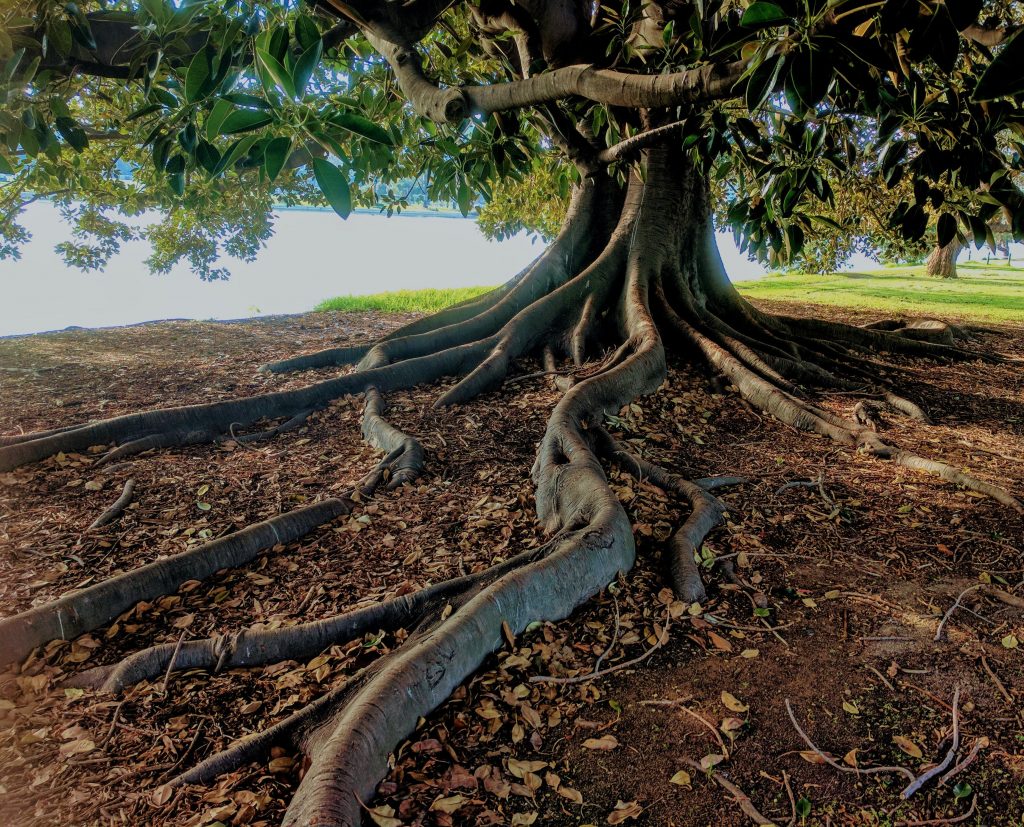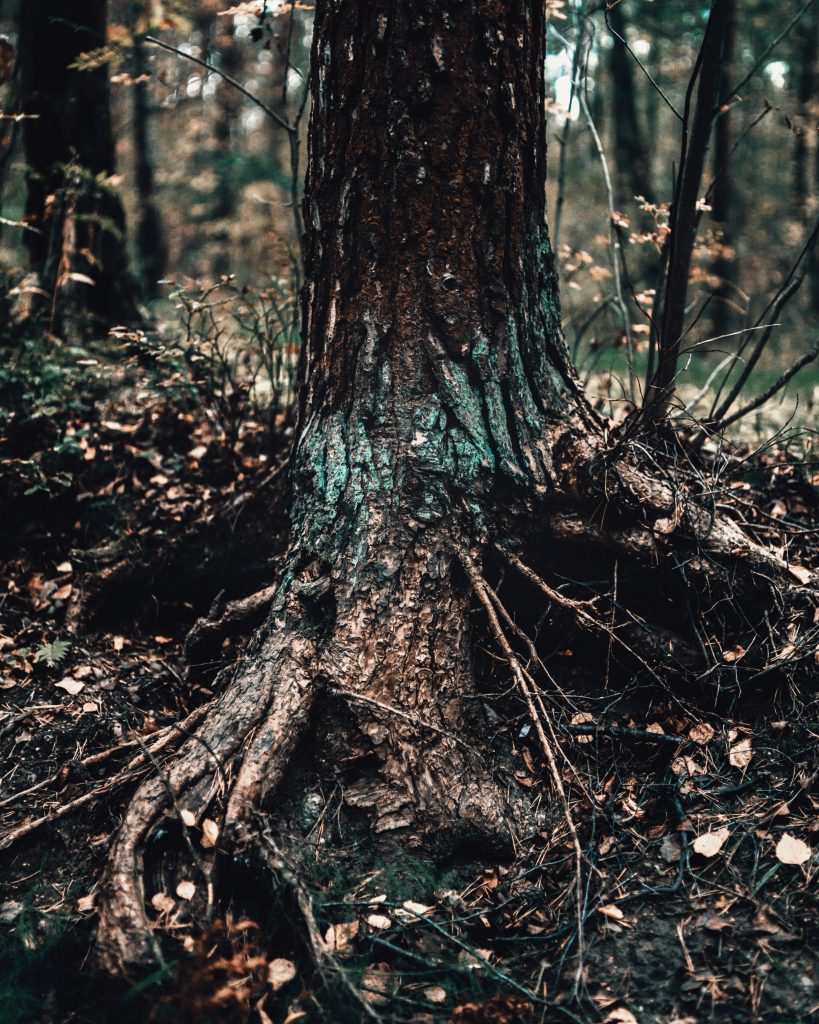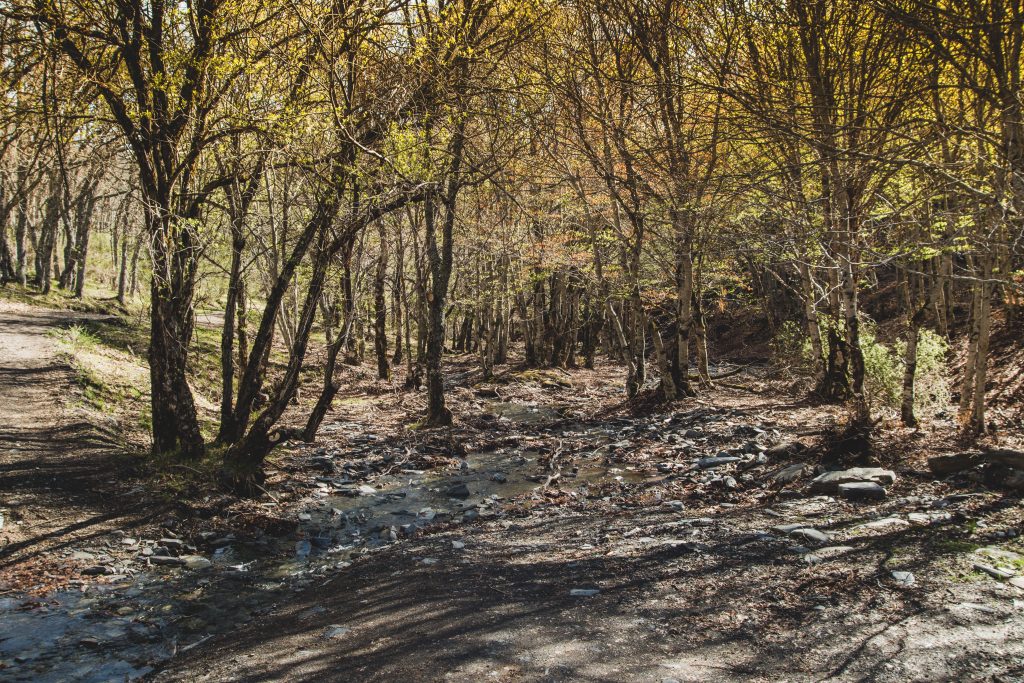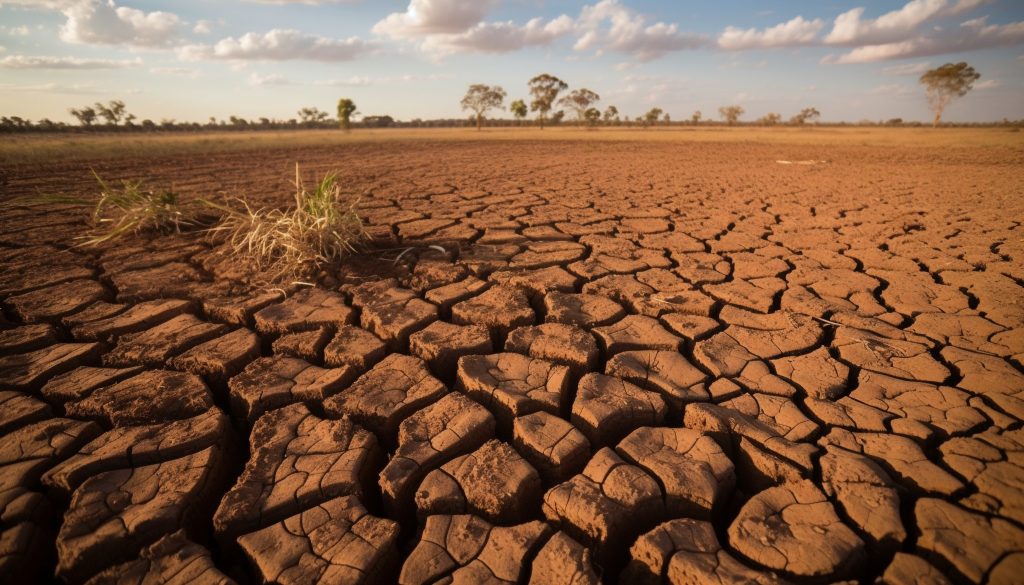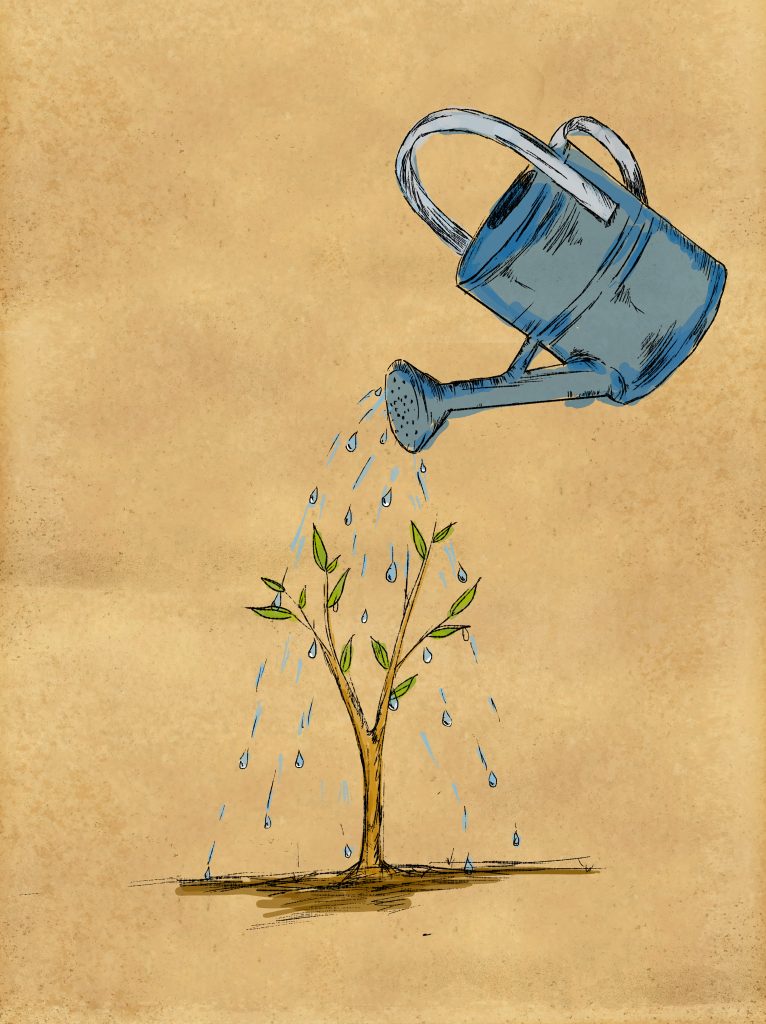THE SCIENCE BEHIND HOW TREES IMPROVE SOIL ORGANIC MATTER DECOMPOSITION
THE SCIENCE BEHIND HOW TREES IMPROVE SOIL ORGANIC MATTER DECOMPOSITION
Trees play a crucial role in improving soil organic matter decomposition through various scientific mechanisms. Here are some key ways in which trees contribute to this process:

- Leaf Litter and Organic Inputs: Trees shed leaves and other organic materials, which contribute to the organic matter content of the soil. These organic inputs, known as leaf litter, contain carbon compounds that serve as a food source for decomposer organisms in the soil.
- Rhizodeposition: Trees release organic compounds, such as sugars, amino acids, and organic acids, through their roots. This process, known as rhizodeposition, provides a source of energy and nutrients for soil microorganisms involved in decomposition.
- Root Exudates: Tree roots release exudates, including enzymes, organic acids, and other compounds. These exudates facilitate the breakdown of organic matter in the soil, enhancing decomposition processes.
- Microbial Activity: Trees support a diverse and active microbial community in the soil. Soil microorganisms, such as bacteria, fungi, and archaea, play a crucial role in decomposing organic matter by secreting enzymes that break down complex organic compounds into simpler forms that can be absorbed by plants.
- Soil Aggregation: Trees contribute to the formation of soil aggregates, which are small clusters of soil particles bound together. Soil aggregates create pore spaces that allow for better water infiltration, gas exchange, and movement of decomposer organisms. This facilitates the decomposition process by providing a favorable environment for microbial activity.
- Soil Moisture and Temperature Regulation: Trees provide shade and transpire water, creating a more favorable microclimate in the soil. Moderate soil moisture and temperature conditions support optimal microbial activity and decomposition rates.
- Mycorrhizal Associations: Many tree species form mutualistic relationships with mycorrhizal fungi. These fungi form a symbiotic association with tree roots, extending the root system and enhancing nutrient uptake. Mycorrhizal fungi also contribute to organic matter decomposition through their enzymatic activities.
- Earthworm Activity: Trees, especially those with dense leaf litter, can attract earthworms to the soil. Earthworms feed on decaying organic matter, facilitating its breakdown and nutrient cycling.
By promoting the decomposition of organic matter, trees contribute to the nutrient cycling and fertility of the soil. The organic matter decomposition process releases essential nutrients that become available to plants, supporting their growth and overall ecosystem productivity.
It’s important to note that the specific mechanisms and rates of organic matter decomposition can vary depending on tree species, soil conditions, climate, and other environmental factors. However, the overall contribution of trees to soil organic matter decomposition is well-established and underscores their importance in maintaining healthy and productive ecosystems.
Besides soil erosion, soil quality is another issue facing agriculture in India today. For example, according to Rattan Lal, President of the International Union of Soil Science, the carbon content of top soil in Punjab, Haryana and Uttar Pradesh — the granary of the country – is a mere 0.05%. Healthy soil is expected to have 2% carbon content.
Forests contribute in soil formation through physical, biological and chemical weathering of the parent rock materials and also through the addition of foliage and its subsequent decomposition. It is well-known that trees help improve soil fertility. Studies show that compared to farms in which only crops are cultivated, when trees are also grown, crop production increased to 200% or more in two-thirds of cases. Increasing the soil’s organic content also increases the amount of water that soil can hold. For every 1% increase in the soil organic content, the soil can hold an additional 60,000 liters per acre.
Science knows very little about soil. Centuries ago, Leornado Da Vinci is supposed to have said: “We know more about the movement of celestial bodies than about the soil underfoot.” That still holds true today. According to the Atlantic: “There can be 10,000 to 50,000 species in less than a teaspoon of soil. In that same teaspoon of soil, there are more microbes than there are people on the earth. In a handful of healthy soil, there is more biodiversity in just the bacterial community than you will find in all the animals of the Amazon basin.”
What little we know about soil and its interaction with trees and the rest of the ecosystem is just the tip of the iceberg. We know for instance that some species of trees provide habitat for bacteria and fungi in their root structure. These organisms perform nitrogen fixation, which is a significant factor in soil fertility.
Trees also recycle nutrients by pulling them up from deeper layers of the ground and bringing them up to the surface through the decomposition of leaf and plant litter to form soil organic matter. Tree canopies also trap some amounts of nutrient from the atmosphere, a source of free fertilizer which is washed from the leaves to the soil by rain.
No Ploughing Recommendation: No-till agriculture, where seeds are directly inserted into the soil, is considered to be supportive to soil biodiversity. No-till results in more organic matter in soil and less erosion, which means more fertility, less fertilizer, and higher yields.
Ploughing reduces a farm’s long-term productivity by exposing the organic-matter-rich topsoil to the surface. This creates fluctuations in soil moisture and temperature, which many soil organisms cannot handle. Tilling also reduces the pores in soil, which would otherwise have allowed water to infiltrate the soil and recharge groundwater.
For example, the number of earthworms per square meter varied between 119 in ploughed land and 160 in no-till land. Earthworms are an important component of the sub-surface soil ecosystem and play an important role in adding nutrient to soil. Tilling also affects certain fungi in the soil that form beneficial symbiotic relationships with plants – receiving sugars from plants and supplying them with nutrients such as phosphorus and nitrogen.
WHY IS MULCH IMPORTANT TO YOUR PLANTS AND SOIL
When you have plants of flowers, vegetables, shrubs, and trees a lot of beginners to gardening do not realize how crucial the use of mulch is to the survival of the plants. No matter what type of garden you have whether it is a container, vegetable, flower gardens or shrubs and trees it is a must to have mulch and it will help in several ways.

- Lowering the use of water. To save water and keep the plant’s roots with sufficient water – use mulch. Concerning water, just a thin layer of nature’s blanket (mulch) will cut down on moisture leaving the soil surface. Denser mulches may cut water usage by as much as 50%.
- Controlling the weeds. By having mulch down this will prevent or at least slow down the growth of weeds. Even if a few eventually pop through they will be easy to see and pull out of the ground.
- Protecting against the cold. Placing mulch in your garden will protect against freezes that will usually kill many plants. People living even in zones 10 sometimes get a freeze and this would prevent a loss of their plants.
- Keeping the soil from drying. A good layer of ing will ensure that the soil will retain moisture a lot longer time.
- Improving soil. This means that you need to use organic mulches that decompose to contribute organic matter to the soil.
Many sorts of mulch add another layer of good looks and quality to your garden beds too. On the market now nurseries have safe colored mulch that will enhance the looks of your garden. For the benefit of the plants though try to use mulch that is made from local items shredded up like wood from trees and bushes growing in your area.
There is an ample assortment of materials which can be used for mulching your garden.
- Some very good organic materials are wood chips, shavings or bark from trees growing in your area shredded, the smaller the better. Because wood is an organic material, it will slow decomposition and be blended into your garden soil, leaving more vitamins and nutrients for many years to come.
- Grass clippings or dried leaves from your trees each autumn are also outstanding natural items to use for mulching your plants and flowers. Some believe straw and hay is the best to use especially alfalfa. As these are organic materials, they’ll add to the general richness and be producing abundantly and be sustaining vigorous and luxuriant growth in your soil as they decompose.
- A lot of people like to use mulch materials that can last for many years at a time like some popular ones that are plastic and rubber material made from recycled tires. These frequently come in the form of circular rings for placing under trees and bushes with ease. Some even use small chunks of rubber.
- Rocks, stones, and pebbles can work as a mulch also since dressing the plain soil around your flowers and plants with pebbles or rocks functions the same purpose of holding moisture and forbidding weed growth. Remember though these items can heat up faster and higher than other types.
- Snow is one the best mulches of them all, as it can let you grow plants that would not last through the winter in areas without snow farther south
Though traditionally, most mulches were made to both shield from danger the plants and flowers while feeding and improving the soil. Mulching permits you to rehash nature’s products to better your garden, really nothing is wasted, and in the action, your garden will appear greener and more healthy.
About Murray, Utah
Murray is a city situated on the Wasatch Front in the core of Salt Lake Valley in the U.S. state of Utah. Named for territorial governor Eli Murray, it is the state's fourteenth largest city. According to the 2020 census, Murray had a population of 50,637. Murray shares borders with Taylorsville, Holladay, South Salt Lake and West Jordan, Utah. Once teeming with heavy industry, Murray's industrial sector now has little trace and has been replaced by major mercantile sectors. Known for its central location in Salt Lake County, Murray has been called the Hub of Salt Lake County. Unlike most of its neighboring communities, Murray operates its own police, fire, power, water, library, and parks and recreation departments and has its own school district. While maintaining many of its own services, Murray has one of the lowest city tax rates in the state.
Neighborhoods in Murray, Utah
Murray Oakes, Grant Park, Southwood Park, Murray Park, Murray Park Restrooms, Willow Pond Park, Neighborhood Veterinary Care
Things To Do in Murray, Utah
Bus Stops in Murray, Utah to Truco Services, Inc.
Bus Stop in Murray Central Station (Bay C) Murray, Utah to Truco Services, Inc.
Bus Stop in State St @ 4801 S Murray, Utah to Truco Services, Inc.
Bus Stop in Murray North Station Murray, Utah to Truco Services, Inc.
Bus Stop in State St @ 4949 S Murray, Utah to Truco Services, Inc.
Bus Stop in Murray Central Frontrunner/Trax Station Murray, Utah to Truco Services, Inc.
Bus Stop in Murray Blvd / Vine St (SB) Murray, Utah to Truco Services, Inc.
Bus Stop in State St @ 3925 S Murray, Utah to Truco Services, Inc.
Bus Stop in State St @ 4824 S Murray, Utah to Truco Services, Inc.
Bus Stop in State St @ 5223 S Murray, Utah to Truco Services, Inc.
Bus Stop in Murray Blvd / Allendale Dr (NB) Murray, Utah to Truco Services, Inc.
Bus Stop in Murray Blvd @ 5039 S Murray, Utah to Truco Services, Inc.
Bus Stop in State St @ 4721 S Murray, Utah to Truco Services, Inc.
Driving Directions in Murray, Utah to Truco Services, Inc.
Driving Directions from Woodruff Tree Trimming and Removal to 4640 Commerce Dr, Murray, UT 84107, USA
Driving Directions from Reliable Tree Care to 4640 Commerce Dr, Murray, UT 84107, USA
Driving Directions from Tree Pro-Tech to 4640 Commerce Dr, Murray, UT 84107, USA
Driving Directions from Prestige Tree And Landscape to 4640 Commerce Dr, Murray, UT 84107, USA
Driving Directions from Excellence Tree & Landscape to 4640 Commerce Dr, Murray, UT 84107, USA
Driving Directions from Amen Trees to 4640 Commerce Dr, Murray, UT 84107, USA
Driving Directions from Tim's Tree Care to 4640 Commerce Dr, Murray, UT 84107, USA
Driving Directions from Jordan Tree Service - Murray to 4640 Commerce Dr, Murray, UT 84107, USA
Driving Directions from Arbor Works to 4640 Commerce Dr, Murray, UT 84107, USA
Driving Directions from Diamond Tree Experts to 4640 Commerce Dr, Murray, UT 84107, USA
Driving Directions from Green Tree Arborist to 4640 Commerce Dr, Murray, UT 84107, USA
Driving Directions from TruCo Services to 4640 Commerce Dr, Murray, UT 84107, USA
Reviews for Truco Services, Inc. Murray, Utah
Emily Abercrombie
We had a great experience with TruCo! They were well priced, responsive and prompt. Michael was a pleasure to work with and gave us advice on which plants to put in where we took out our ugly old shrubs. I would highly recommend this company!!!
Michelle Turpin
TruCo Services gets 5 stars from us for customer service. We experienced a few issues with their services this last year and Rob Eccles in senior management, stepped in and immediately handled our issues. He was very committed to making sure they understood our expectations and would execute to make us happy.
Siobhan Billingsley
I work for a property management company and have the pleasure of working with Rob at a community in Sandy. He has been incredible to work with and always responds in a timely manner. He knows all the homeowners by name and address and is aware of all the "problem" areas when it comes to sprinklers. I never have to worry about following up with him because he always reaches out to provide me with an update. If you're looking to work with someone who takes pride in their job, is professional, and can solve the worst landscaping problems thrown your way, Rob is your guy. Thank you, Rob for all you do!
Jaime S.
We have used Truco at 2 of the complexes we manage, they have been great to work with. Good quality service, outstanding customer service with good communication. That's hard to find these days. I highly recommend them. Travis has been awesome to work with.
Jerusha Smart
We use TruCo for a majority of our properties and our home. While other landscaping companies we use come and go for various reasons like cost, communication issues, work performance, etc., TruCo is always consistent in price and work. Also, Rob is the best.
